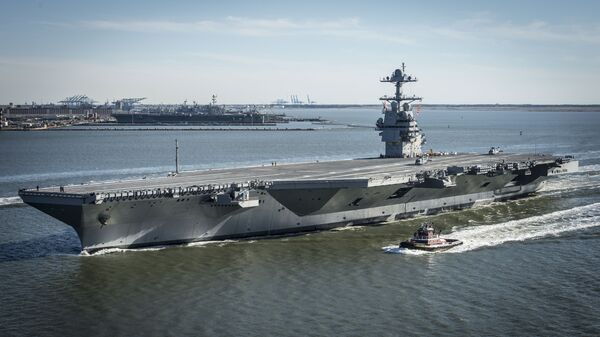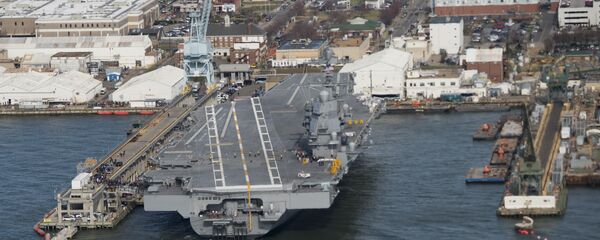The Ford is expected to enter active duty this summer. It will become fully operational in 2020 following what the Navy calls a 'shakedown' period, during which the carrier will undergo at-sea operations, training the ship's crew to operate the ship's onboard systems.
Speaking to Radio Sputnik about the new supercarrier, Sam LaGrone, a USNI News editor who has been tracking the development of the Ford for several years, explained that delays and cost overruns notwithstanding, the vessel marks a substantial upgrade to the US Navy's capabilities.
"The biggest difference between the Ford and the Nimitz class aircraft carriers of the previous generation is its ability to launch aircraft," the journalist said. "The entire aircraft carrier is designed around the idea that it can launch 30% more aircraft during a particular period than the Nimitz class. That's kind of the central idea behind the Ford versus the Nimitz."
"There are five specific new technologies that may be incorporated into the Ford. Developing those, and particularly testing those to make sure that they're functioning has a lot to do with the delay."
Among other things, the Ford includes substantially improved arresting gear, automation allowing for a reduction in crew, stealth features, an electromagnetic aircraft launch system, and a new nuclear reactor design which produces more power.
LaGrone said that the cost overruns too have to do with these new technologies.
"If you're dealing with a 20% increase in the level of technology…it's going to cost 50-100% more. The new technology that went into the Ford was developed completely from scratch. There's no template, there's no technology that you can use as a base and improve on it. There was [just] an idea for a capability, and then it had to be completely designed from scratch, and that is usually really expensive."
As for the Ford's upgrade potential, LaGrone said that this too has been taken into account.
"Over the last decade, the US Navy has talked a lot about modularity – the ability to take an existing platform and expand its capabilities. The aircraft carrier is the easiest to do that [with], because when you expand a carrier's capabilities, you include new aircraft. So if you look at the Nimitz class when they were introduced in the late 1970s, the flight deck and the aircraft that are flying on the flight deck are almost 100% completely different almost 40 years on."
The Gerald R. Ford carrier is able to carry up to 90 aircraft, including Boeing F/A-18EF Super Hornets, EA-18G Growlers, and the new Lockheed Martin F-35C stealth multirole fighters. Its arsenal also includes transport and early warning planes, naval helicopters and unmanned drones.





